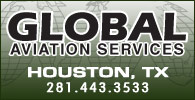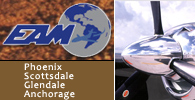Look To An Authorized Service Center
for
SB 237 Inspection

By Geoffrey Pence,
Customer Service Manager, Twin Commander Aircraft

After more than two years of deliberation, the FAA has issued a Notice of Proposed Rulemaking (NPRM) that would make Twin Commander Service Bulletin (SB) 237 an airworthiness directive (A.D.).
SB 237 calls out inspecting for corrosion between the mating surfaces of the upper wing skin and the engine mount beam support straps on 690, 690A, and 690B model Twin Commanders. The straps carry engine loads from the support beams into the upper wing skin and wing internal support structure. The service bulletin, which became effective in May 2005, called for compliance within 150 hours time in service or one year, whichever comes first. The proposed A.D. would mandate compliance according to the service bulletin timeline.
(The comment period on the NPRM ends October 13. See http://www.regulations.gov/search/Regs/home.docketDetail?R=FAA-2009-0778.)
Many aircraft have already been inspected over the more than four years since the service bulletin was issued and, typically, corrosion is found under the footprint of the steel straps.
To do the inspection, technicians must first remove the upper engine nacelle and nacelle support structure to expose the support straps. The support straps then must be removed and the upper wing skin examined for corrosion. If corrosion is found, the skins must be replaced.
The service bulletin offers four options for treating corrosion in the affected areas. Options one through three involve replacing sections of the upper wing skin. Option one provides for replacing the least amount of skin, option three the most.
Option four involves replacing only the engine mount beam support straps. This option is available only if light or no corrosion is found during the inspection. Regardless of whether corrosion is present, the support straps must be replaced with new straps that feature enhanced corrosion protection. Different options (one through three) can be employed on the right and left sides.
Twin Commander Aircraft is making a concerted effort to communicate with the fleet in advance of the FAA issuing the final A.D. so that we can provide parts support for aircraft that would be affected.
The SB 237 inspection and repair is complex—the inspection alone is estimated to take at least 40 hours per side—and there is potential for technicians who are unfamiliar with the procedure to damage the wing structure while replacing the engine straps. That’s why the service bulletin states that it is mandatory that at least one member of the inspection team have completed special training on the service bulletin. That training is available from FlightSafety International (FSI). To date some 48 technicians have successfully completed the special FSI training program.
SB 237 also recommends that the inspection and repair be done at an authorized Twin Commander Service Center. Authorized service centers have the specialized tools and parts on hand to handle SB 237 inspections and repair as well as any other Twin Commander service issue. More important, they have technicians who possess formal Twin Commander-specific technical education, and years of experience working on Twin Commanders. Training and experience are an effective combination, and they come pre-paid at each factory authorized Twin Commander Service Center.
Trained, experienced Twin Commander technicians at authorized Service Centers can save owners time, frustration, and expense. Service center technicians have handled every conceivable maintenance problem, and if they haven’t they know who to call at other factory-authorized Service Centers around the world who will know.
If you have not already complied with the service bulletin, I encourage you to speak with your Twin Commander-authorized Service Center about scheduling your inspection. For more information, see www.twincommander.com.
Discuss this article in the forums...







